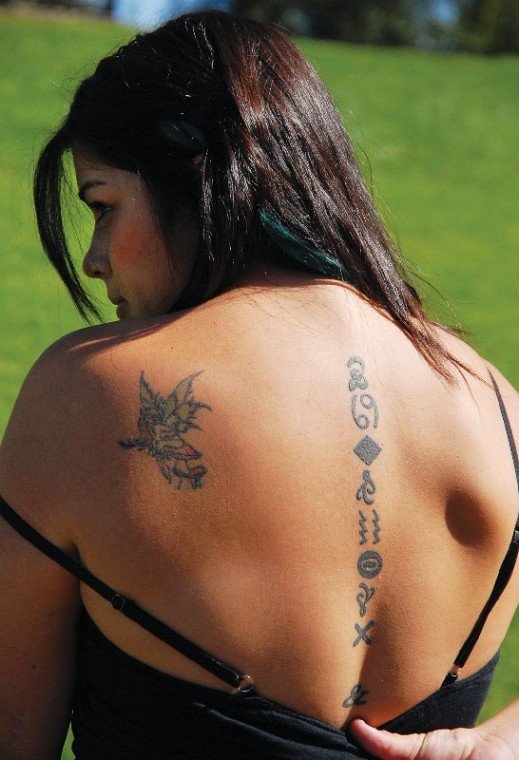Tattoos on high school students aren’t going anywhere, but some
teachers and parents want to stop pictures of them from getting any
ink.
Tattoos on high school students aren’t going anywhere, but some teachers and parents want to stop pictures of them from getting any ink.
Last week, the Gilroy High School yearbook adviser photographed students’ tattoos for a page in the yearbook. The event inspired backlash from parents, teachers and residents, who said the practice promotes immoral and illegal behavior that distracts from academics. Yet proponents, including principal James Maxwell, said the page is a snapshot of student life.
“The yearbook is a painting of the student body and the times that they live in,” he said. “Putting something in the yearbook is neither promoting something or not.”
Teachers approved the student-suggested page – inspired by a 2006-San Benito High School yearbook page – during the yearbook’s planning stages and always intended it to be “tasteful,” English teacher and yearbook adviser Veronica Andrade said.
“When the idea is presented, it sounds controversial,” she said. “But when you see it in print, it’s not as bad as it seems.”
All students photographed turned in bilingual consent forms with parent acknowledgement of the tattoo. Staff will crop pictures so that readers are unable to tell what part of the body the tattoos are on. In addition, Andrade will have Gilroy police review the page to make certain no images contain gang-related material.
Precautions notwithstanding, the tattoo page has riled up Gilroyans, many of whom contacted the Dispatch with heated remarks. In a letter to the editor, J. G. McCormack decried tattoos as marks of low-class, venerial disease-carrying sailors. A red phone caller one-upped these disparaging remarks, calling the tattoos “slut-chic.”
Some parents and teachers worried the school is promoting illegal behavior – tattooing minors. State law does not prohibit people under 18 from getting tattoos, but it does prohibit giving tattoos to them. Though some parents and teachers said the law is new and children could get tattoos with a parent’s consent just two years ago, a 1997 state law refutes this assertion.
“I don’t want to encourage students to attempt to get something that’s illegal to get,” said a high school teacher who requested anonymity for fear of retribution. Some of the teacher’s children have tattoos “and they’re beautiful, but they had to wait until they were 18.”
In addition, the tattoo page wastes school resources, parent and Ascencion Solorsano Middle School teacher Tobi Brown said.
“I think that we need to focus on academic and sports and music and all the things that are important to nurture the kids and make them grow,” she said.
The tattoo page does the opposite, Brown said.
“I just think it’s sort of like putting a picture of kids smoking,” she said. “Some of the kids are of age to smoke but why should we be promoting it.”
Tattoos do not pose inherent health risks, as do smoking and drinking alcohol – pictures the yearbook prohibits – and are not necessarily illegal, Maxwell said. Students could get tattoos in other states where tattooing minors with parental consent is legal, he said.
Squashing this yearbook page that students requested because of negative opinions would amount to exclusion, Maxwell said.
“A quarter to a third of our kids have tattoos or piercings,” he said. “I refuse to marginalize a sizable part of our population.”















